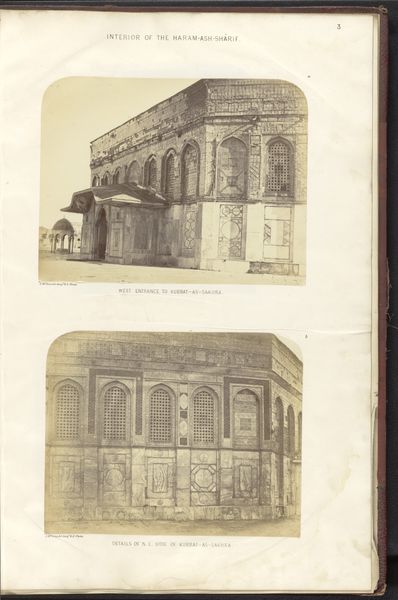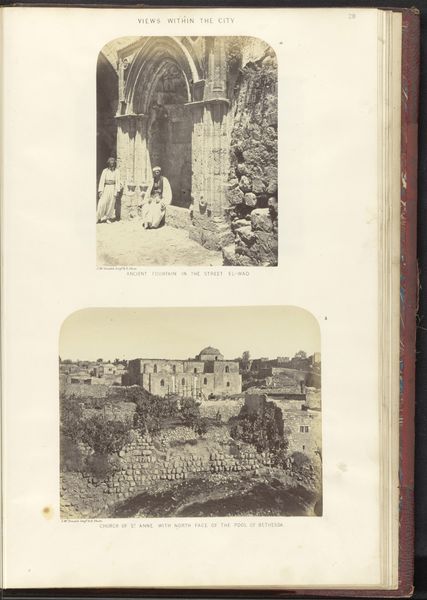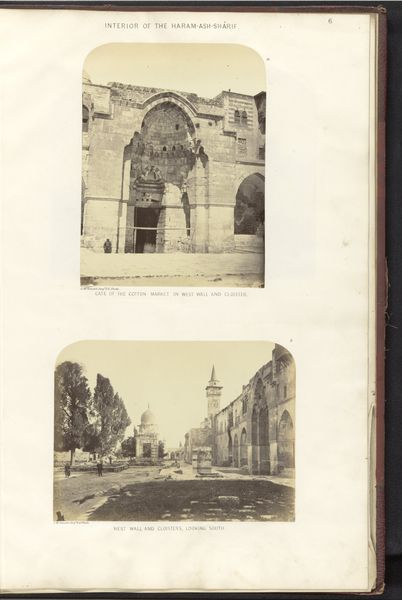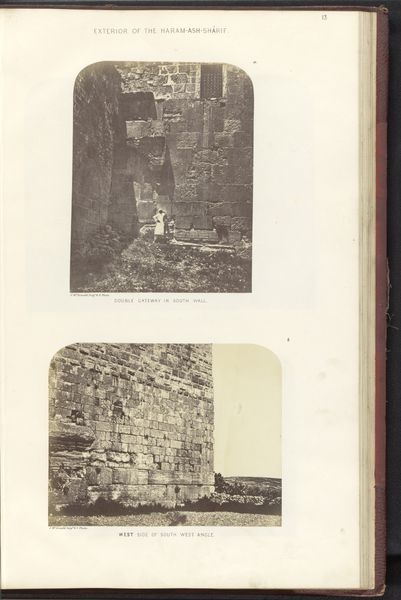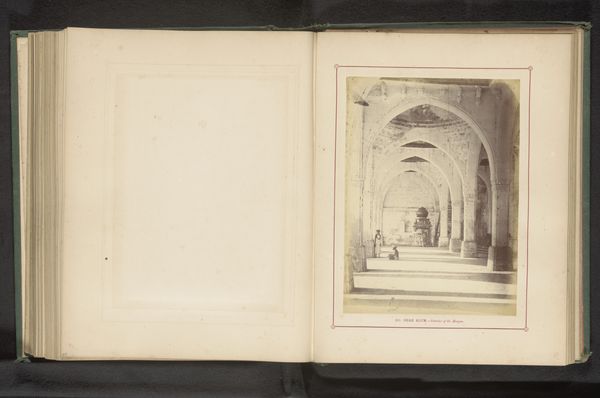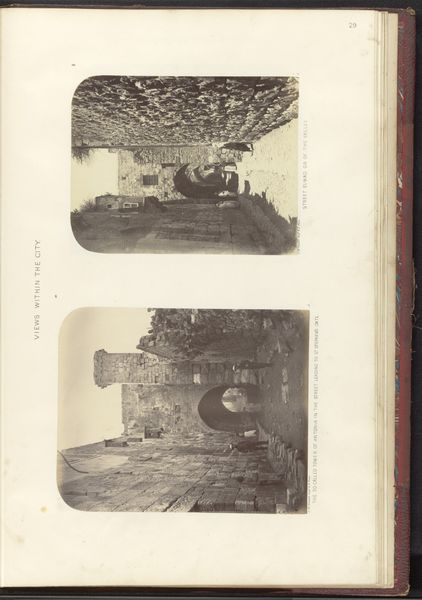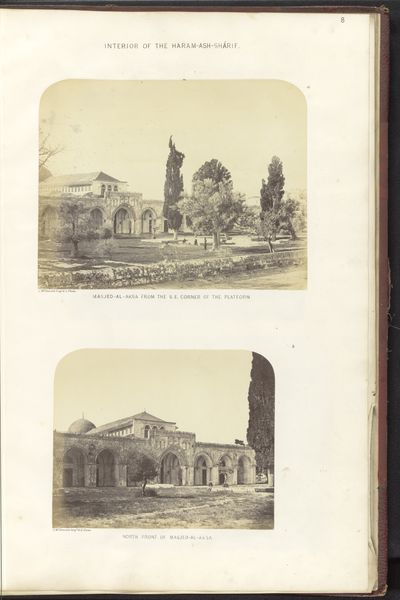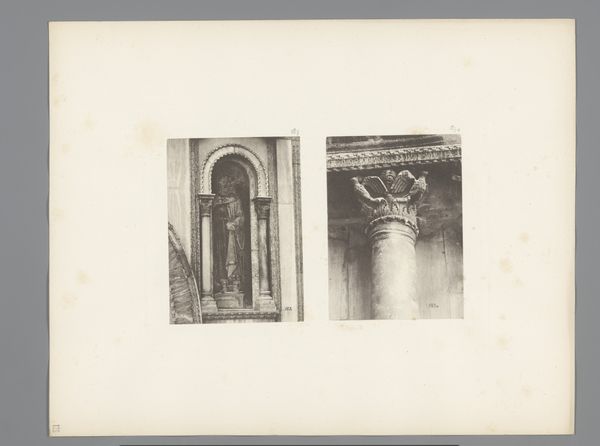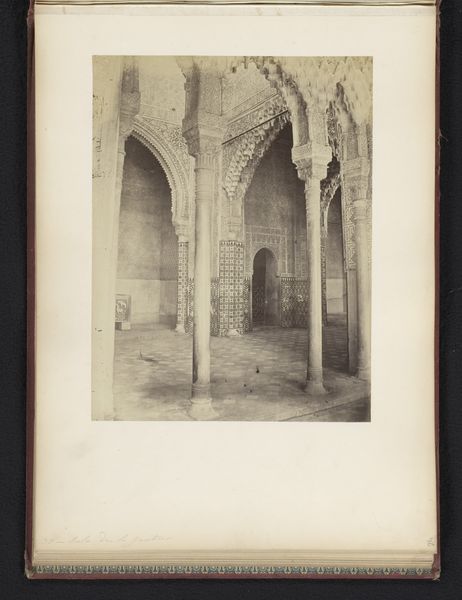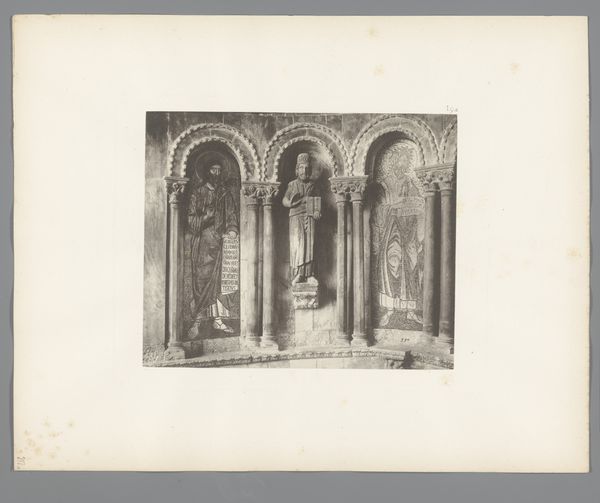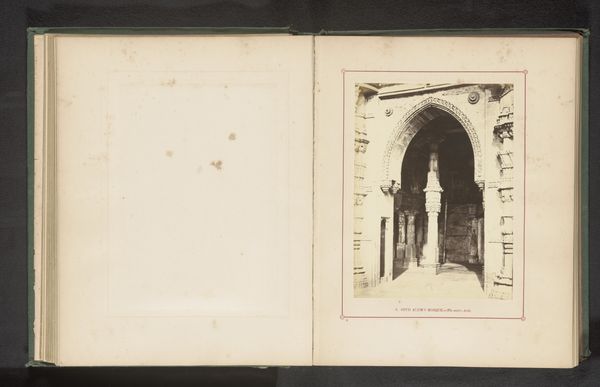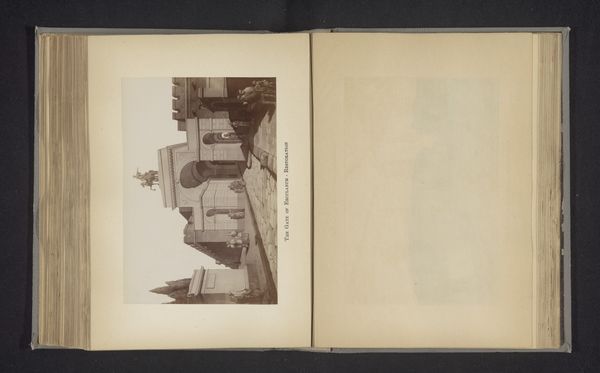
Gezicht op het interieur van de Rotskoepelmoskee en een gezicht op een kansel en een scherm, op de Tempelberg in Jeruzalem before 1865
0:00
0:00
photography, albumen-print
#
landscape
#
photography
#
coloured pencil
#
cityscape
#
islamic-art
#
albumen-print
Dimensions: height 523 mm, width 340 mm
Copyright: Rijks Museum: Open Domain
Art Historian: Editor: Editor: This albumen print, taken before 1865, gives us two views inside and outside the Dome of the Rock in Jerusalem. I'm really struck by how photography, still relatively new at the time, could capture the intricate details of these architectural spaces. What do you see in this piece? Art Historian: I'm immediately drawn to the materiality of this albumen print and how that shapes our understanding. Think about it: we're looking at a chemical process, light interacting with silver salts on paper. The final result speaks volumes about the colonial project's efforts of documentation. How was photography employed, distributed, and consumed in the mid-19th century, particularly in regions like Jerusalem? Who was seeing these images, and what purposes did they serve? Editor: That's fascinating. I hadn't considered the distribution of these prints. Were they intended as documents of power? Art Historian: Precisely. These weren't neutral depictions. This albumen print represents a specific, external gaze. The act of photographing a sacred space and then disseminating those images implies a certain control and ownership, influencing the viewer’s understanding and perspective of Islamic culture. Now, considering the intense labor and resources necessary to take and circulate photographs in this period, what does this say about wealth and power? Editor: Wow, that's changed how I see it completely. It's no longer just a pretty landscape; it’s about control, wealth and how images shape understanding. Art Historian: Exactly! By exploring the photographic medium, the work it took to create it, and the ways those prints were utilized, we gain valuable insights into a broader socio-political and economic context of that historical time. I learned a great deal about shifting my perspective of photographic image by contemplating its means of production.
Comments
No comments
Be the first to comment and join the conversation on the ultimate creative platform.
